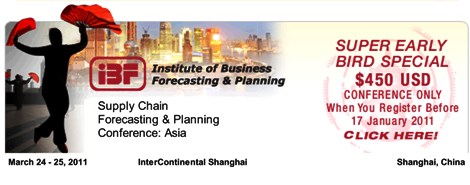Go to any supply chain conference, and you will hear it. Yes, the term collaboration is bandied about. It is over-used and often over-hyped in discussions largely without meaning. So, what does it mean? And, what happened to the supply chain collaboration initiatives of the 1990s?
Let’s start with the definition. The greatest success in supply chain relationships is when true collaboration happens. What does it look like? It is a when a sustainable win/win value proposition. Six elements are required: resources, skills, joint vision, leadership, a plan and aligned incentives.
The problem is that the so-called “collaborative programs” of the 1990s focused solely on process missing the mark on these six elements. The tenants of VMI and CPFR were well-intended, but they fell short in building true collaborative relationships. Let’s take a closer look.
Why did CPFR not gain wider adoption?
Many tout success, and many conference presentations expound on benefits; but back home at the office, the teams are confounded. In the late 1990’s it was all the rage. Yes, CPFR (Collaborative Planning Forecasting and Replenishment), over-hyped by many, has fallen short in delivering the promise
The results are clear. After ten years of active projects, collaborative planning forecasting and replenishment failed to reach its promise for three reasons:
- Laborious. Just too much work for the benefit. The added costs did not measure up to the benefit and the programs were not grounded in the six essential elements of collaboration. Instead, it was a process implemented in the absence of the core elements of what drives collaborative relationships.
- Retail forecasts not up to the task. For CPFR to work, retail forecast accuracy needs to be high and with sufficient granularity to ensure analysis. The dirty little secret with CPFR is that only three retailer forecasts—Best Buy, Food Lion and Wal-Mart—were up to the task. In addition, the gap in retailer data for perpetual inventories and accurate on-hand data could not give the teams a good starting point.
- Lack of integration into Enterprise Systems. For most Advanced Planning System (APS)/Enterprise Resource Planning (ERP) deployments, there was no logical connection for the data. As a result, it failed to make a systemic impact on supply chain excellence.
So, as a result, most CPFR initiatives became 20-year old pilot projects. They were isolated—lacking integration into corporate demand planning architectures—and only as effective as the strength of the relationship and the quality of available data.
When does it make sense?
However, let’s not throw the baby out with the bathwater. It would be incorrect to say that CPFR never makes sense. It was over-hyped and over-promised, and applied to situations where there was not a good fit. So, you might be saying, where does it fit? When a company has these five stars to align, CPFR can be used to reap great benefit:
- Significant channel presence. The account needs to be significant—at least 10% of the channel-for the investment to warrant the expense. The greater the channel presence, the greater potential benefit. It must matter and make a difference.
- High Demand Volatility: CPFR makes more sense for products with short life cycles, seasonal patterns, strong dependence on weather, and in competitive categories. It makes less of an impact for products that have stable demand. Companies benefit from advance warning signals.
- Strong Retail Partnership. The data is clean, available and meaningful to both parties’ business objectives. Both companies have strong planning skills and a passion for forecast accuracy. It is tied and closely coupled to the business.
- The Tie to Replenishment can make a Difference: Many companies forget the “R” in CPFR. If he advanced notification from forecast sensing can make a difference in improving replenishment and the other conditions can be satisfied, go for it! However, not all replenishment cycles can be shifted in concert with the CPFR signals
- Right Stuff: It makes sense when there is demand architecture to support close coupling of the demand signal. The architecture must allow integration at the account, ship-to level.
What now?
The key is to be judicious. CPFR has a place in driving supply chain excellence; just not the over-hyped promise of ten years ago. Be more judicious. Be more realistic. Make smarter decisions.




